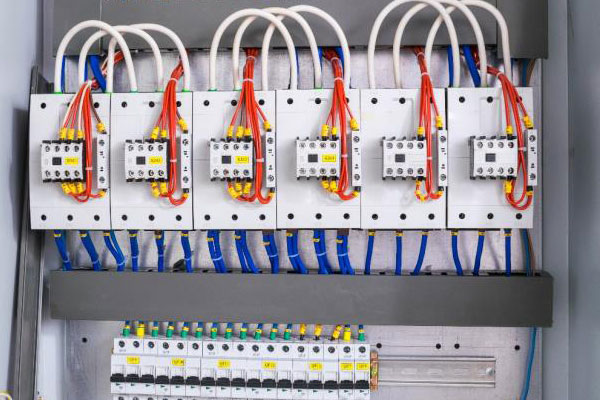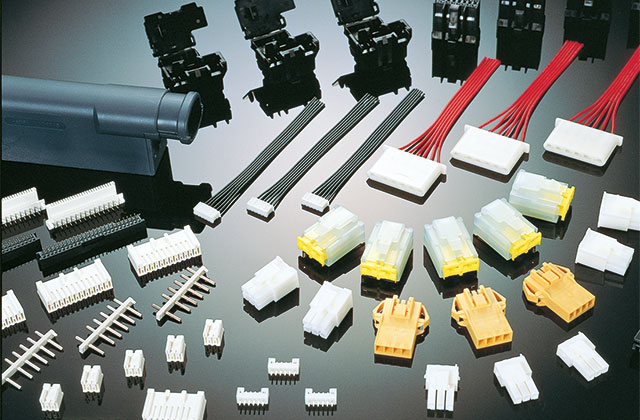Products
Excellent heat resistance, strength and toughness, insulation, and oil resistance. It is widely used in automotive parts, electrical and electronic parts.
Please request SDS and various certificates through a trading company or other purchasing channels.

Connectors are components or devices that connect two cables to allow electric power or electric signals to flow from one cable into the other—and are ubiquitous components in the myriad electronic devices used in our daily lives.
The increasing sophistication and multifunctionality of electronic devices has spurred an explosion in the variety of connectors available, which now span an extraordinarily broad range of functionality. For example, even within the narrow subfield of connectors for automotive applications one finds that connectors responsible for delivering data from cameras and other sensor devices to engine control units (ECUs) are subject to specifications entirely different from those of the high-current, high-voltage connectors used for batteries and inverters in electric vehicles.
Asahi Kasei supports customers' product manufacturing in the connector industry by providing flame resistance, various electrical properties, glow wire resistance (GWIT, etc.), tracking resistance (CTI), weather resistance (UL746C f1, f2), long-term We offer engineering plastics with excellent properties (UL746B RTI, etc.).
 SN series
SN series
Recent years have witnessed increasing worldwide efforts to reduce environmental footprints and emphasize worker safety, leading to growing demands to eliminate the use of halogens and red phosphorus.
Considering the environment and safety, Asahi Kasei began developing LEONA™ SN series, a new polyamide 66 resin (PA66 resin, Polyamide 66, Nylon 66) that uses Flame retardance that do not contain halogens or red phosphorus. It has arrived.

This polyamide 66 resin LEONA™ SN series has the characteristics of being non-halogen and non-red phosphorus, as well as having excellent laser transparency, which allows for high laser weldability and laser printability. In addition, since it contains aromatic PA, it has excellent low smoke generation properties, and has features such as high CTI, high RTI, and high GWIT.
 644Z
644Z
Modified PPE resin XYRON™ 644Z is used for connectors around automotive batteries.
In order to comply with strict automotive OEM standards such as LV214 and USCAR, Materials must also be reliable.
XYRON™ 644Z has excellent flame resistance (UL 94 V-0, 5VA), long-term properties (UL746B RTI 125℃), tracking resistance (CTI PLC=2), and weather resistance (UL746C f1). I am.

This feature has been highly evaluated, and it is used by major Chinese battery manufacturers for their in-vehicle battery connectors.
 PV40Z
PV40Z
Modified polyphenylene ether resin (modified PPE resin) XYRON™ (PV40Z) has an excellent balance of tracking resistance and low-temperature shock, making it possible to design compact high-voltage compatible connectors.
It has excellent hydrolysis resistance and ammonia resistance, and does not cause extreme deterioration of physical properties even under high temperature and high humidity environments.
As an Asahi Kasei Group environmentally friendly product, this product contributes to reducing CO2 emissions during the product use stage.
We recommend LEONA™ FR370, a polyamide resin (PA66 resin, Polyamide 66, Nylon 66), which is non-halogen Flame retardance (V0) and easily moldable, for the waterproof and dustproof nuts in the moat area of cables and connectors.

LEONA™ ™ is a polyamide resin (PA66 resin, Polyamide 66, Nylon 66) that has properties such as laser printability, moldability, strength / toughness, electrical properties (CTI), and heat resistance for connectors for connecting electrical and electronic components. I would like to suggest.
Polyamide 66 resin (PA66 resin, Polyamide 66, Nylon 66) LEONA™ has a lineup of SN series (GF reinforced non-halogen Flame retardance), FR series (non-reinforced Flame retardance), and FG series (GF reinforced Flame retardance).

Asahi Kasei's engineering plastics products and technologies I'll introduce you in more detail.
We deliver product and industry information to help you gather information.